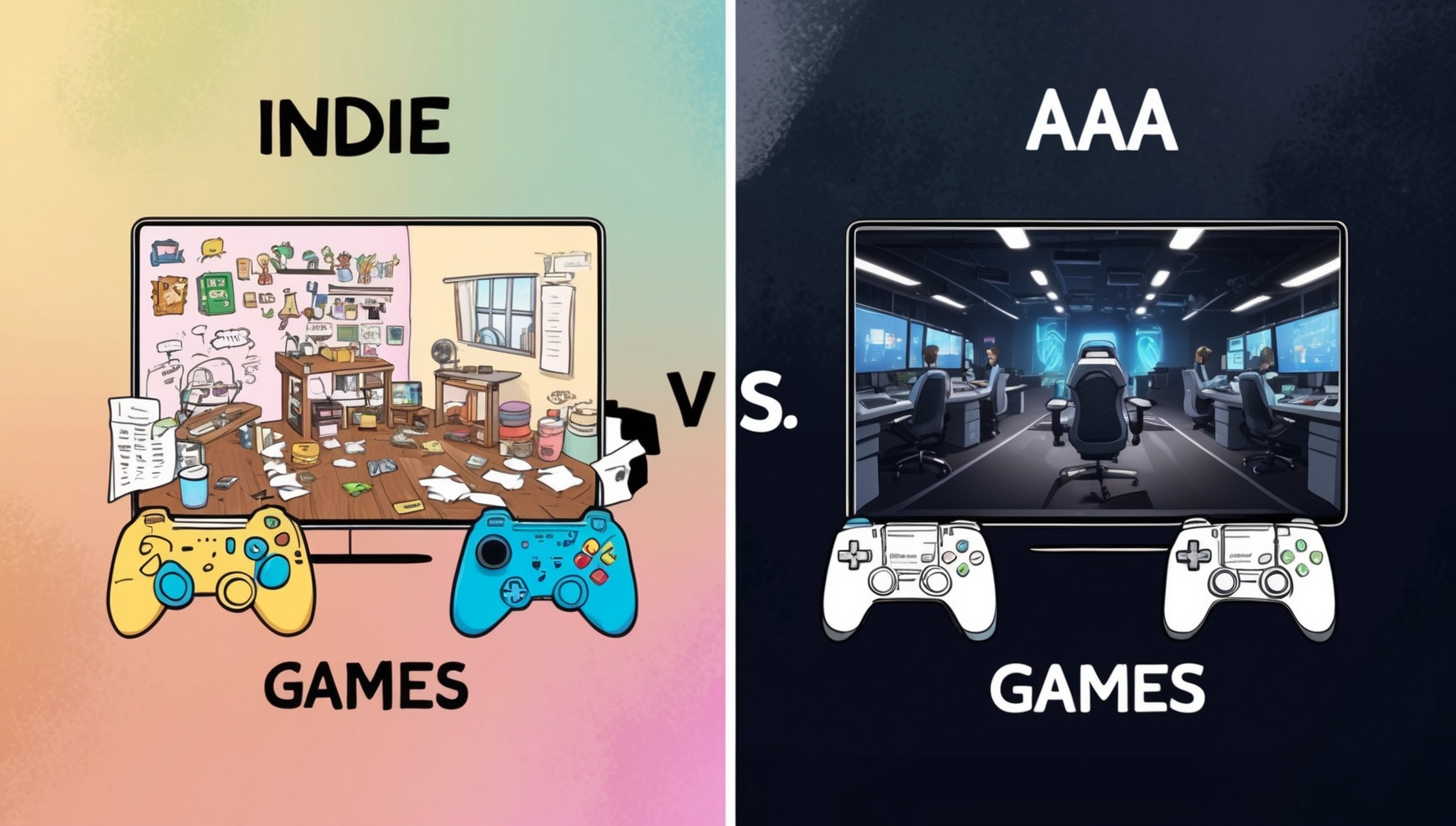Indie Games vs AAA Games: An In-depth Comparison
2025-01-13

In the ever-evolving landscape of video games, two distinct categories have emerged to capture the hearts of players worldwide: indie games and AAA titles. While both offer unique experiences, they differ significantly in various aspects. This comparison delves into the nuances that set them apart, exploring elements like gameplay, functionality, aesthetics, and more.
The Creative Freedom of Indie Developers
Indie games are often celebrated for their innovative ideas and experimental gameplay. Without the constraints of large corporations, indie developers have the liberty to explore unconventional concepts and mechanics. This creative freedom results in games that can be deeply personal, quirky, or groundbreaking in their design. Titles like "Undertale" and "Celeste" exemplify how indie games can push the boundaries of storytelling and player engagement.
AAA Titles: The Power of Massive Resources
On the other side of the spectrum, AAA games benefit from substantial budgets and extensive development teams. This financial backing allows for high production values, cutting-edge graphics, and expansive worlds. Franchises such as "The Witcher" and "Assassin's Creed" showcase the capabilities of AAA studios to create immersive experiences with a high level of polish and detail.
Gameplay Mechanics: Innovation vs. Refinement
Indie games often prioritize innovation in gameplay mechanics. Developers might introduce novel control schemes, unique puzzles, or experimental narratives that challenge traditional gaming conventions. This focus on innovation can lead to fresh and unexpected experiences for players.
AAA games, however, tend to refine existing mechanics to perfection. They build upon tried-and-true formulas, enhancing them with the latest technology. The result is a polished gameplay experience that, while perhaps less innovative, offers reliability and depth. Games like "Call of Duty" and "FIFA" exemplify this approach, delivering consistent quality that fans expect.
Visual Aesthetics: Artistry vs. Realism
When it comes to visual presentation, indie games often embrace stylized art styles. Limited budgets encourage creativity, leading to distinctive aesthetics that set games apart. Whether it's the pixel art of "Stardew Valley" or the minimalist design of "Limbo," indie titles use visuals to create unique atmospheres.
AAA games aim for photorealism, leveraging advanced graphics engines and technology to create lifelike environments and characters. The attention to detail is astounding, with realistic lighting, textures, and animations. This pursuit of realism enhances immersion but also requires significant resources and expertise.
Budget Constraints and Development Risks
Indie developers typically operate with limited funding, which influences various aspects of game development. Budget constraints can lead to shorter game lengths, simpler graphics, or reduced marketing efforts. However, this also fosters a sense of resourcefulness and can result in highly creative solutions.
AAA studios, backed by large publishers, have access to substantial financial resources. This allows for large-scale projects with extensive content and high production values. However, the stakes are higher, and there's immense pressure to deliver commercial success. The need to appeal to a broad audience can sometimes stifle creativity, leading to safer, formulaic game designs.
Community Engagement and Support
Indie games often cultivate close-knit communities. Developers frequently interact directly with players, gathering feedback and fostering a sense of collaboration. Early access releases and community-funded projects are common, allowing players to influence development.
AAA games, while having vast player bases, might lack this level of personal engagement. Communication is typically handled through official channels, and direct interaction with developers is less common. However, the extensive resources of AAA studios enable robust customer support and frequent updates.
Risk-Taking in Game Design
Without the burden of meeting high sales expectations, indie developers can take significant risks in their game design. They might tackle controversial subjects, experiment with unorthodox gameplay, or explore niche genres. This willingness to take risks can lead to innovative and thought-provoking experiences.
AAA studios, accountable to shareholders and investors, are often more risk-averse. They tend to focus on proven formulas and popular genres to ensure profitability. While this approach can produce high-quality games, it may limit the potential for groundbreaking innovation.
Storytelling: Personal Narratives vs. Epic Sagas
Indie games frequently offer intimate, personal stories. Developers might draw from personal experiences or explore themes not commonly addressed in mainstream gaming. This can result in emotionally resonant narratives that connect deeply with players.
AAA games often present grand, epic stories with complex plots and expansive lore. The resources available allow for cinematic storytelling, voice acting, and elaborate cutscenes. These games can create vast universes for players to explore, though they may sometimes sacrifice depth for scale.
Technological Constraints and Advantages
Limited access to cutting-edge technology can be a hurdle for indie developers. They might lack the tools or expertise to implement advanced graphics or complex systems. However, these constraints can also inspire creativity, leading to innovative uses of available technology.
AAA studios have the advantage of utilizing the latest technology and development tools. They can implement advanced graphics, sophisticated AI, and expansive open worlds. This technical prowess contributes to immersive and seamless gaming experiences but requires significant investment.
Market Presence and Distribution
Indie games often rely on digital distribution platforms like Steam, itch.io, or the Nintendo eShop to reach players. Marketing is typically grassroots, leveraging social media, word of mouth, and indie game festivals. This approach can make it challenging to stand out in a crowded market.
AAA games benefit from extensive marketing campaigns, including advertisements, promotional events, and partnerships. They have a strong presence in retail stores and dominate media coverage. This visibility ensures that these titles reach a wide audience but also contributes to the high costs of development and marketing.
Player Expectations and Experiences
Players often approach indie games with an open mind, expecting unique or unconventional experiences. There's a willingness to forgive minor technical issues in exchange for creativity and innovation. This mindset allows indie developers to experiment without the fear of harsh criticism.
Expectations for AAA games are high, with players anticipating polished, high-quality experiences. Any shortcomings, such as bugs or performance issues, can lead to significant backlash. The pressure to meet these expectations can influence development decisions and priorities.
The Role of Passion in Development
Indie games are often passion projects, driven by individuals or small teams with a deep love for their work. This passion can shine through in the final product, resonating with players who appreciate the personal touch.
While AAA games involve passionate developers, the scale of the projects and corporate oversight can dilute individual contributions. The collaborative nature of large teams means that the vision must align with broader company goals, which can impact the creative process.
Economic Impact and Sustainability
For indie developers, financial success can be unpredictable. A hit game can lead to significant rewards, but many indie titles struggle to break even. This uncertainty can affect sustainability and the ability to fund future projects.
AAA studios have more stable financial footing, with diversified portfolios and ongoing revenue streams from franchises. This stability allows for long-term planning and investment in new technologies and IPs. However, the pressure to maintain profitability can influence creative decisions.









